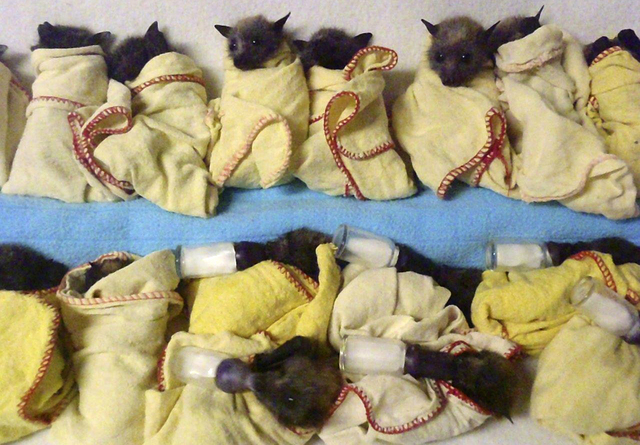50K dead bats fall from Australia sky during heat wave

CANBERRA, Australia — At least 50,000 bats had been killed by the heat in Australia’s southeast during the state’s hottest year on record.
Heat-stressed bats — including the Black Flying Foxes, Little Red Flying Foxes and the endangered Gray-Headed Flying Foxes — cling to trees and urinate on themselves in a bid to reduce their body temperatures, according to Louise Saunders, president of the Queensland animal welfare group Bat Conservation and Rescue.
“As they succumb, they just fall in heaps at the base of trees,” Saunders said. “You can have 250 or more — it’s like dripping chocolate — all dying at the base of trees.”
“It’s an enormous animal welfare concern,” she added.
Weather forecasters in Australia said some parts of the sparsely populated Pilbara region along the rugged northwest coast were approaching 50 degrees Celsius (122 degrees Fahrenheit) on Thursday. The record high of 50.7 degrees Celsius (123.3 F) was set in 1960 in Oodnadatta, South Australia state.
The late arrival of the monsoon in northern Australia, which has a cooling effect, is contributing to the searing heat, said Karly Braganza, the manager of climate monitoring at the Bureau of Meteorology. Global warming also is playing a role, he said.
Since Dec. 27, records have been set at 34 locations across Australia — some by large margins — where temperature data has been collected for at least 40 years mostly in Queensland and New South Wales states. In the mining town of Narrabi in New South Wales, the new record of 47.8 degrees Celsius (118 F) exceeded the previous record by 3.6 degrees Celsius (6.5 F).
The extreme temperatures come on the heels of Australia’s hottest year on record, beating the previous record year of 2005, with mean temperatures 1.2 degrees Celsius (2.2 F) above the 1961-90 average.
Meanwhile, a deep freeze gripping large swaths of the United States started to ease slightly after low temperature records were shattered in numerous locations. In Atlanta, the mercury fell to minus 14 degrees Celsius (6 F), and at Washington Dulles International airport it sank to minus 17 degrees Celsius (1 F), eclipsing the 1988 mark of minus 13 degrees Celsius (8 F).